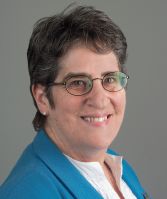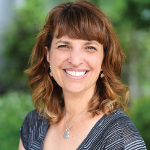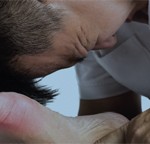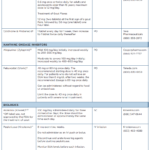 Marian Hannan Celebrated after 10 Years as AC&R Editor-in-Chief
Marian Hannan Celebrated after 10 Years as AC&R Editor-in-Chief
By Kelly April Tyrrell
This summer, the 10-year tenure of Marian Hannan, MPH, DSc, as editor in chief of Arthritis Care & Research (AC&R), has come to an end. Kelli Allen, PhD, assumed the post on July 1.
“Marian has done a fantastic job over the past 10 years, and I want to continue to grow the journal,” says Dr. Allen, professor of medicine in the division of rheumatology, allergy and immunology at the University of North Carolina School of Medicine, Chapel Hill, and a research career scientist at the Durham VA Medical Center. “A lot of it is maintaining the strong position it’s in.”
And that strong position is due, Dr. Hannan’s friends and colleagues say, in no small part to the hard work, open-mindedness, and unique perspectives that Dr. Hannan invited during her two terms at the helm of ARP and ACR’s multidisciplinary research journal.
“Marian was president of the ARP when I first met her, and she was so open and welcoming,” says Carol Oatis, PT, PhD, professor emeritus of physical therapy at Arcadia University, Glenside, Pa. “That’s one of the traits that makes her such a great editor. She wants to hear about what people are doing. She’s got a boundless curiosity.”
Serving as AC&R’s top editor was, Dr. Hannan says, “the best job I’ve ever had—and I have had some really good jobs.”
Dr. Hannan is an epidemiologist with a focus in rheumatology (epidemiology, she says, is a field most people did not understand until the COVID-19 pandemic). She earned her undergraduate degree from the University of California, Berkeley, and in 1981, her Master’s in Public Health at the Yale University School of Medicine, New Haven, Conn. She graduated in 1995 from Boston University School of Medicine with an epidemiology doctorate.
Today, Dr. Hannan is a professor in the Department of Epidemiology at Harvard T.H. Chan School of Public Health, a professor of medicine at Harvard Medical School and Beth Israel Deaconess Medical Center, and a senior scientist at the Marcus Institute for Aging Research at Hebrew SeniorLife in Boston, where she co-directs the Musculoskeletal Research Center.
She has worked since the 1980s to uncover patterns of disease and improve population-
level outcomes.
“My focus has been on osteoarthritis. What used to be called a wear-and-tear disease we now know is not because epidemiology has done a really great job of redefining components of the disease,” she says. “Epidemiology groups together what buckets people fall into, better describes those buckets and describes the minute details where we can make a difference.”
Dr. Hannan didn’t set out to become an epidemiologist, nor one with an interest in rheumatic disease.
“I came of age when medical school was very difficult to get into and required deeper pockets than what I had available,” she explains. “Yet epidemiology required about all the same science background and worked under the same physiologic processes, but at a population level. Statistics is your medical kit instead of the stethoscope physicians have.”
She describes herself as a “nosey parker,” which made the investigative nature of epidemiology all the more appealing.
“Pick any outcome or disease you like and dive into what happened and how to make it better for groups of patients,” Dr. Hannan says. “Physicians focus on individuals. Epidemiologists focus on groups … so what [we] epidemiologists do—and what we do again and again—is look at patterns and then we do an exquisite painting of those patterns so we can look at what to do next.”
After earning her master’s degree, Dr. Hannan went to work for the Massachusetts Department of Public Health, examining the environmental causes of birth defects and other diseases. “But with the political environment of the 1980s, they had cut back on public health funding, and they got rid of a lot of jobs at the state level,” she says. “Mine was one of them.”
Her next job happened to be one in rheumatology. “I cast my net and rheumatology found me,” she says. “We have uncovered a lot since the 1980s and ’90s, and now in the new century we are learning a lot about rheumatology.”
As editor-in-chief of AC&R, she continued to take her net-casting to heart. She made it a priority to “learn more about experts and find very cool studies.”
Dr. Hannan achieved that, Dr. Oatis explains, by attending national meetings, including the ACR’s annual meeting, and listening in on a diversity of talks and presentations. She was always on the lookout for new and important research findings and would attend poster sessions and talk to a broad range of people who were there sharing their work.
Dr. Oatis eventually became an associate editor of AC&R during Dr. Hannan’s leadership and found that Dr. Hannan equipped her team to adopt a similar mindset.
“She was interested in what was going on and she asked us all to do the same,” Dr. Oatis explains. “She created sticky notes for each of her associate editors to put on posters we found interesting. We would talk to the author and encourage them to submit [to the journal]. That was her leadership.”
This approach reflected some of Dr. Hannan’s most critical values. She wanted the journal’s editors—from a broad range of fields in rheumatology—to “explore strange new worlds,” she says.
“I like to find new ways of doing things and one of the core beliefs I have is that communications are key to making things better,” she says. “We’d bring our scientific interest to (researchers) and say, ‘Not only are you doing cool work, but we want to help you communicate out to people what your work is.’ What are the ways we can communicate and connect with people who have a good scientific story we want to tell?”
It was a model that helped the journal grow and reach new audiences, bringing returns on investment as new contributors saw themselves represented among the journal’s offerings and sent in their submissions.
Dr. Hannan’s inclusive perspective also extended to the journal’s editorial board, Dr. Oatis notes. “She encouraged diversity and she empowered people to expand on that.”
Leslie Crofford, MD, Wilson Family Chair in Medicine and professor of pathology, microbiology and immunology at Vanderbilt University, Nashville, Tenn., served on the journal’s board during Dr. Hannan’s first term and became her deputy editor during Dr. Hannan’s second. Dr. Crofford called her “a dream to work with.”
“We talked early in her first term and in her second about how we can reinforce that AC&R is a journal that belongs to the ACR and the ARP. It’s our journal. … Our best work should be published in the journal, and Marian spearheaded being present and being visible,” says Dr. Crofford, who is also a professor of medicine at Vanderbilt. “Marian says: ‘We want you and your work.’”
As editor in chief, Dr. Hannan was passionate about building community among rheumatologists and rheumatology specialists and researchers, Dr. Crofford adds.
“We represent a wide readership and need to ensure voices are heard and we have them at the table,” says Dr. Hannan. “A focus for me was to have physician authors and people like multidisciplinary physical therapists and nursing researchers. We are one of a few journals I can think of that serves such a wide audience.”
She was also mindful of the perspectives of up-and-comers in the field, including fellows who brought both new ideas and a craving for fresh information.
In thinking back on her decade of publishing, no singular research studies stand out to Dr. Hannan. Rather, she says: “It’s the way that we tell the story and pull it apart that stands out.” She also talks about the ways in which the journal innovated and grew with the science for which it’s been tasked with showcasing.
“Science has taken great leaps and bounds in terms of the toolbox,” Dr. Hannan says. “We’ve gone beyond just a screwdriver and a hammer to having an incredible toolbox with which to understand things.” Coding skills she honed in graduate school nearly two decades ago are now performed by second graders in the classroom, for example, and computers capable of running complex statistical programs no longer take up entire rooms.
Yet the job of a journal editor is never without challenges. For Dr. Hannan, these were primarily concentrated in a couple of areas—some of them financial and some of them political.
“Funding has become a hardship,” she says. “Very high quality research that is incredibly pertinent is taking longer to get to us because research funding is taking a hit … there is so much great science worth investigating and a need to report it, and … scientific breakthroughs are not as easy as they would have been if we had the funding we had 10 years ago.”
And, of course, she notes, there is the COVID-19 pandemic, which has carried its own unique challenges.
But Dr. Hannan is confident she leaves AC&R in good hands with Dr. Allen. “Kelli is incredibly fabulous and incredibly smart and well versed in all things having to do with rheumatology and will be an incredibly fabulous editor-in-chief,” she says. “My main mantra every day was ‘Don’t screw up the great foundation handed me by the editors who came before me … Kelli is ready to rock and roll, and I couldn’t ask for a better person to follow in my footsteps.”
With the close of her chapter at AC&R, Dr. Hannan is under no illusion she will suddenly find herself with an abundance of time on her hands. She will continue to teach at Harvard Medical School and T.H. Chan School of Public Health, and she will continue to write her own papers and reviews for epidemiology and rheumatology journals.
She says that while taking up a new hobby, such as making stained glass or salsa dancing, sounds fun, she is really looking forward to slowing down, even if only a little. “I am a family-oriented person, so having time to have dinner with people, particularly family and friends, or sitting in the backyard gardening … or sitting in a hammock, how can I relax and have fun and be with the people I want to be with?”
Dr. Crofford is also looking forward to that time with her. Over the years, she and Dr. Hannan have become good friends.
Many, it seems, can say the same.



